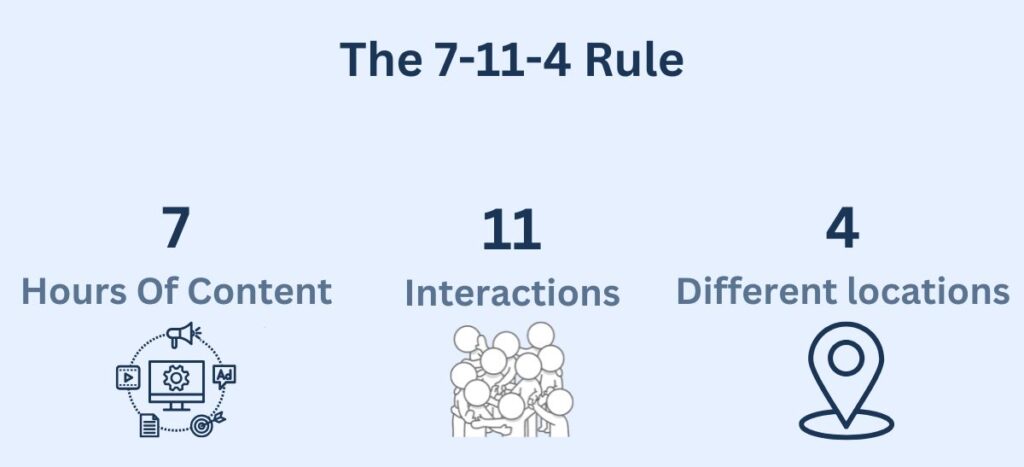Every day, thousands of potential clients search for legal help online—but if they’re not finding your firm, they see someone else’s.
Competing with big-budget giants can feel impossible for small to mid-sized law firms.
But here’s the truth: you don’t need their budget; you need their strategy.
This is where SEM for law firms (Search Engine Marketing) levels the playing field.
With tools like Google Ads for law firms, precision targeting, and data-driven campaigns, SEM ensures your firm shows up where it matters most—right in front of clients actively searching for legal help.
And with the right law firm marketing agency as your partner, you can craft a strategy that doesn’t just compete but dominates.
So, how can your firm harness SEM to attract high-value cases and outmaneuver the competition?
This guide breaks down four powerful strategies to do just that. Let’s get started.
1. Build Your Digital Moat: Defend and Expand Your Online Territory
Competitors can steal your clients right from under you without a strong moat.
That moat? It’s your digital presence powered by strategic Search Engine Marketing (SEM).
With SEM for law firms, you can defend your market share and, better yet, expand it by targeting the right clients at the perfect moment.
Let’s break this down step-by-step.
Target High-Intent Keywords for Maximum ROI
Not all clicks are created equal. When running Google Ads for law firms, it’s crucial to target high-intent keywords like “car accident lawyer near me” or “divorce attorney in [city].”
These are the search terms used by people actively looking for legal help, not just browsing.
Pro Tip: Use marketing analytics for law firms (like Google Ads’ built-in keyword planner or SEMrush) to identify the top-performing keywords in your market and track how each contributes to case acquisition.

Source: SEMrush
Dominate Local Search with Google Local Services Ads (LSAs)
Local Services Ads are a game-changer for law firms.
These ads appear at the top of Google search results, complete with your firm’s name, phone number, and reviews—making them impossible to ignore.
LSAs help smaller firms compete with bigger ones by prioritizing proximity and relevance over ad spend.
Quick Tip: Pair LSAs with detailed review management. The more positive reviews you have, the higher your ad will rank—and clients trust those stars!
Expand Your Reach with Facebook Ads
While Google dominates intent-driven searches, Facebook Ads for law firms excel at generating awareness and trust.
By targeting local communities, interests, and demographics, you can ensure your firm stays top-of-mind when someone needs legal help.
Track Everything with Data-Driven Insights
Here’s the thing: spending money on ads without knowing what’s working is like arguing a case without evidence. This is where marketing analytics for law firms come in.
Investing in SEM services for lawyers ensures that every dollar spent on ads is optimized for maximum return, helping your firm attract more high-value cases.
Tools like Google Analytics, HubSpot, or even heat mapping software like Crazy Egg can give you insights into:
- Which ads are driving the most consultation?
- Where visitors are dropping off on your landing pages.
- How much do you pay per lead, and is it worth it?
Building Your Digital Moat: Key Takeaways
- Prioritize High-Intent Keywords: Focus on searches that show an immediate legal need, such as“car accident lawyer near me.”
- Use LSAs to Dominate Local Search: Capture leads with top-of-page visibility and verified reviews.
- Diversify with Facebook Ads: Build awareness and connect with your community for long-term growth.
- Let Data Guide You: Track everything from ad clicks to landing page performance to ensure your budget works for you.
2. The Client Journey: 7-11-4 Rule for Winning High-Value Cases
Your potential clients don’t just hire a law firm; they research it.
They need to trust you, see your expertise, and feel confident before deciding. This is where Google’s 7-11-4 Rule comes into play.
The 7-11-4 Rule states that a prospect will typically spend 7 hours consuming your content, engage with your brand 11 times, and interact across four different platforms before they feel confident enough to contact you.

As a law firm, understanding this journey is critical to winning high-value cases.
Here’s how to leverage SEM, content, and conversion tactics to guide potential clients through this process.
Step 1: Establish Trust with Thought Leadership
Your prospects need to see your expertise on display before they trust you.
Law firm thought leadership plays a pivotal role in this stage.
By creating valuable, educational content—like blogs, videos, and case studies—you position your firm as the go-to authority in your niche.
What It Looks Like in Action:
- A personal injury law firm publishes video case studies explaining past success stories (e.g., settlements achieved for car accident victims).
- A divorce attorney posts blogs answering questions like, “How does child custody work in [city]?” or “Top mistakes to avoid in divorce negotiations.”
- A firm specializing in corporate law shares downloadable guides on “Key Legal Steps for Mergers & Acquisitions.”
The goal is to ensure your content educates, builds confidence, and answers the questions your ideal clients are asking. Every blog post, video, or case study is another “touchpoint” in the 7-11-4 Rule, bringing your prospects closer to a decision.
Step 2: Keep Prospects Engaged with Email Marketing
Once prospects interact with your content, you need to keep them engaged.
This is where email marketing for law firms shines.
From automated follow-up emails to educational newsletters, email allows you to nurture leads across multiple stages of their journey.
Key Tactics:
- Lead Magnets: Offer free resources like downloadable legal guides or consultation booking tools in exchange for email addresses.
- Educational Newsletters: Share tips, case updates, or FAQs to keep your firm top-of-mind.
- Retargeting Email Campaigns: For example, email prospects who clicked on your Google Ads but didn’t schedule a consultation. A subject line like “Still Have Legal Questions? We’re Here to Help” can reignite interest.
Step 3: Use Retargeting to Stay Visible Across Platforms
Most potential clients won’t convert after just one interaction with your website or ad.
Research shows it takes an average of 5–7 brand impressions before someone is ready to take action. With SEM, retargeting ads are your secret weapon.
What Are Retargeting Ads?
Retargeting ads follow users who’ve interacted with your site or ads but haven’t converted. These ads keep your firm in front of them as they browse other platforms, reminding them of the value you offer.
Example:
- A family law firm runs retargeting display ads on Google and Facebook, showing testimonial videos or offering “Schedule Your Free Case Evaluation Today.”
- These ads are specifically shown to people who have visited the website but have not booked an appointment, bringing them back into the funnel.
Step 4: Optimize Your Client Journey with CRO and SEM
No matter how great your SEM campaigns are, they’ll fall flat if your landing pages don’t convert.
This is where law firm CRO (conversion rate optimization) becomes essential.
Your landing pages must be tailored to the needs of your prospects and make it as easy as possible for them to take action.
Checklist for CRO:
- Speed Matters: Ensure your website and landing pages load in under 3 seconds to reduce drop-offs.
- Clear CTAs (Call-to-Actions): Use actionable language, such as “Book Your Free Consultation” or “Talk to an Attorney Today.”
- Client-Focused Copy: Address client pain points and highlight your expertise. For example: “Fighting for accident victims in [city] for over 20 years.”
- Mobile-Friendly Design: Over 70% of searches occur on mobile devices, so your landing pages must be optimized for smaller screens.
Pro Tip: Combine SEM with CRO by tailoring landing pages to specific campaigns. For example, if your Google Ads target “workplace injury lawyer,” ensure the landing page addresses workplace injury cases directly with relevant imagery, testimonials, and content.
3. Brand Before Tactics: Why Strategy Trumps Shiny Objects
The best SEM campaigns build trust, authority, and long-term recognition for your law firm.
In the race to get immediate results, it’s easy to focus on short-term tactics like PPC campaigns.
But here’s the reality: without a strong brand to back them up, those efforts can fall flat.
SEM for law firms works best when it’s part of a larger strategy that prioritizes brand-building alongside tactical ad campaigns.
After all, a trusted brand doesn’t just convert—it dominates.
Balancing Ads with Long-Term Visibility: Law Firm Link Building
Ads like PPC and Google Local Services Ads (LSAs) are excellent for driving immediate traffic.
But to stay relevant in the long run, your law firm needs to focus on link building for law firms.
What is Link Building?
Link building refers to acquiring backlinks—links to your website from reputable sources like legal directories, news outlets, or community organizations.
Backlinks are like votes of confidence for your firm, signaling to search engines that your site is authoritative and trustworthy.
Why It Matters for SEM:
A strong backlink profile enhances your site’s organic visibility, making your firm more likely to appear at the top of search results.
This complements your paid SEM campaigns, as clients often research your firm before contacting you, comparing your organic presence to competitors.
Pro Tip: Focus on law firm link building by partnering with reputable directories like Avvo or Martindale-Hubbell, contributing guest articles to industry blogs, and building relationships with local organizations for cross-promotion opportunities.
Community-Driven Branding: The Secret to Standing Out
Clients are more likely to choose a law firm that feels relatable and connected to their community.
Incorporating cause-driven initiatives into your SEM strategy can set your firm apart from the competition while fostering trust.
How to Incorporate Community Engagement into SEM:
- Highlight Pro Bono Work: Showcase your firm’s efforts to support local causes or provide free legal services to underserved communities.
- Example: A Chicago law firm launched a PPC campaign promoting their free tenant rights seminars during an eviction crisis. The ads not only drove sign-ups but also reinforced their reputation as a firm that cares about the community.
- Promote Local Sponsorships: Sponsor local events or charities and highlight this involvement in your ads and content.
- Example: A personal injury firm in Atlanta sponsored a local marathon. They ran targeted Facebook ads promoting their sponsorship, which increased their brand visibility among health-conscious local residents.
Why It Works: Community-driven branding builds an emotional connection, making your firm more than just a service provider—it makes you a trusted partner in people’s lives.
Law Firm Thought Leadership: Building Authority Beyond Clicks
Your brand is your reputation as a trusted expert.
While tactics like PPC may drive traffic, law firm thought leadership ensures you’re the firm people remember.
Examples of Thought Leadership in Action:
- Hosting webinars on niche legal topics (e.g., “Navigating Estate Planning in 2025”).
- Publishing case studies or insights on recent legal trends.
- Contributing expert commentary to local or national media outlets.
How It Boosts SEM:
When clients see your thought leadership content and then encounter your ads, they’re far more likely to trust and convert.
The Balance Between Brand and Tactics
Why You Can’t Ignore Branding:
Shiny objects like PPC ads deliver immediate results, but long-term success comes from building a brand that clients recognize and trust.
By combining short-term ad strategies with efforts like law firm link building, community engagement, and thought leadership, your firm can dominate both the SERPs and your market.
4. Data is the New Evidence: Measure, Optimize, Repeat
If your SEM campaigns aren’t measurable, they’re guesswork. And guesswork doesn’t win cases.
One of the greatest advantages of SEM for law firms is its ability to provide crystal-clear insights into what’s working and what isn’t.
Unlike traditional advertising methods like billboards or TV spots, SEM offers complete measurability.
From click-through rates (CTR) to cost-per-lead (CPL), every dollar spent can be tracked, analyzed, and optimized for maximum impact.
But data alone won’t improve your case acquisition rates.
It’s what you do with that data that counts.
Here’s how to leverage marketing analytics for law firms to optimize your campaigns and outpace the competition.

Created by DALL E
Step 1: Track the Metrics That Matter
Not all data is created equal. The key to success lies in identifying and tracking the right metrics for your SEM campaigns.
Critical Metrics for Law Firms:
- Click-Through Rate (CTR): Measures how many people clicked on your ad after seeing it. A higher CTR indicates that your ad copy and targeting resonate with your audience.
- Cost-Per-Lead (CPL): Shows how much you’re spending to acquire each lead. A lower CPL means your campaigns are cost-efficient.
- Conversion Rate: Tracks the percentage of users who take a desired action, such as booking a consultation.
- Return on Investment (ROI): The ultimate measure of your campaign’s success—how much revenue you’re generating compared to what you’re spending.
Pro Tip: Use platforms like Google Ads, HubSpot, or SEMrush to analyze these metrics. Regularly review the data to identify which campaigns, keywords, or ads are performing well and which need improvement.
Step 2: Test, Test, and Test Again with A/B Testing
A/B testing is the secret weapon for refining your SEM strategy.
It involves creating two versions of an ad, landing page, or even a headline and testing them against each other to see which performs better.
Where to Apply A/B Testing:
- Google Ads: Experiment with different ad headlines, descriptions, or calls-to-action (e.g., “Free Consultation” vs. “Speak with an Attorney Today”).
- Landing Pages: Test variations in layout, imagery, or CTA buttons. For instance, does a red “Schedule Now” button convert better than a blue one?
- Ad Targeting: Split audiences by geography, demographics, or interests to see which segments respond better to your campaigns.
Step 3: Optimize for Conversions with Law Firm CRO
Driving traffic to your website is only half the battle—converting that traffic into leads is where the real challenge lies.
This is where law firm CRO (conversion rate optimization) becomes essential.
How to Improve CRO for Law Firms:
- Simplify Forms: Keep intake forms short and easy to complete. Asking for fewer details upfront can increase the likelihood of submissions.
- Compelling CTAs: Use action-oriented language like “Get Your Free Consultation Now” or “Speak to an Attorney in Minutes.”
- Social Proof: Showcase testimonials, reviews, or case results prominently to build trust.
- Mobile Optimization: With over 70% of searches happening on mobile devices, ensure your site and landing pages are fully responsive.
Step 4: Harness the Power of Retargeting and AI
Not every visitor will convert on their first interaction, but that doesn’t mean the opportunity is lost.
Retargeting ensures your ads follow prospects across platforms, reminding them of your firm’s services and keeping you top-of-mind.
How Retargeting Works:
- A potential client visits your website after clicking a Google Ad but doesn’t book a consultation.
- Retargeting ads are then shown to that same prospect on platforms like Facebook or YouTube, offering them a second chance to engage (e.g., “Need Legal Help? Book Your Free Case Review Today”).
Next-Level Optimization with AI:
AI tools, like Google’s Performance Max campaigns, can take SEM optimization to a whole new level.
With AI-driven automation and SEM services for lawyers, firms can continuously optimize their ads, ensuring their message reaches the right audience at the right time.
These platforms analyze vast amounts of data—keywords, user behavior, ad performance—and automatically adjust your campaigns to maximize ROI.
Conclusion: Winning the SEM War – Strategize and Adapt
SEM for law firms is essential—but only with a clear, adaptable strategy. Let’s recap the four winning approaches that will help your firm dominate:
- Build Your Digital Moat: Target high-intent clients with precise ads.
- Map the Client Journey: Optimize every touchpoint to nurture leads.
- Balance Ads with Branding: Invest in trust, authority, and visibility.
- Use Data to Improve: Track, test, and optimize for conversions.
Success in SEM is about combining short-term wins with long-term growth.
To gain a competitive edge in your market, working with experts who specialize in SEM services for lawyers can streamline your campaigns, reduce wasted ad spend, and drive consistent lead generation.
To achieve this, partnering with experts like [A] Growth Agency, a top-tier law firm marketing agency, can make all the difference.
Their proven strategies in SEM, branding, and analytics ensure your firm is leading.
Don’t go to war without a strategy. Evaluate your SEM efforts, refine your approach, and let [A] Growth Agency help you win your digital battlefield.
Ready to grow? Let’s get started.

